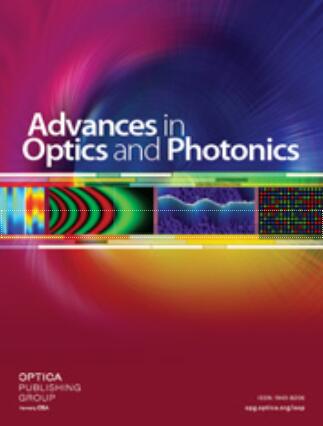量子态层析成像的概念和强光的经典实现:教程
IF 23.8
1区 物理与天体物理
Q1 OPTICS
引用次数: 90
摘要
断层摄影测量是一种普遍存在的用于估计量子态性质的工具,其应用被称为量子态断层摄影(QST)。这个过程涉及到在一系列投影测量中操纵单个光子,通常是为了构建一个密度矩阵,从中可以推断出其他信息,而且既费力又复杂。在这里,我们解开了QST的步骤,并概述了如何用强烈的(经典)光以快速简单的方式演示它。我们在时间反转方法中使用标量光束来模拟QST的结果,并利用经典矢量光束中的不可分性作为将后者视为“经典纠缠”状态的一种方法,以直接说明QST。我们为这种方法的实际实施提供了一个完整的自己动手的资源,并配有教程视频,我们希望这将有助于将这种核心量子工具引入教学和研究实验室。我们的工作强调了使用强烈的经典光作为研究量子系统的手段的价值,并在这个过程中提供了关于QST基本原理的教程。本文章由计算机程序翻译,如有差异,请以英文原文为准。
Concepts in quantum state tomography and classical implementation with intense light: a tutorial
A tomographic measurement is a ubiquitous tool for estimating the properties of quantum states, and its application is known as quantum state tomography (QST). The process involves manipulating single photons in a sequence of projective measurements, often to construct a density matrix from which other information can be inferred, and is as laborious as it is complex. Here we unravel the steps of a QST and outline how it may be demonstrated in a fast and simple manner with intense (classical) light. We use scalar beams in a time reversal approach to simulate the outcome of a QST and exploit non-separability in classical vector beams as a means to treat the latter as a “classically entangled” state for illustrating QSTs directly. We provide a complete do-it-yourself resource for the practical implementation of this approach, complete with tutorial video, which we hope will facilitate the introduction of this core quantum tool into teaching and research laboratories alike. Our work highlights the value of using intense classical light as a means to study quantum systems and in the process provides a tutorial on the fundamentals of QSTs.
求助全文
通过发布文献求助,成功后即可免费获取论文全文。
去求助
来源期刊

Advances in Optics and Photonics
OPTICS-
CiteScore
56.60
自引率
0.00%
发文量
13
期刊介绍:
Advances in Optics and Photonics (AOP) is an all-electronic journal that publishes comprehensive review articles and multimedia tutorials. It is suitable for students, researchers, faculty, business professionals, and engineers interested in optics and photonics. The content of the journal covers advancements in these fields, ranging from fundamental science to engineering applications.
The journal aims to capture the most significant developments in optics and photonics. It achieves this through long review articles and comprehensive tutorials written by prominent and respected authors who are at the forefront of their fields.
The journal goes beyond traditional text-based articles by enhancing the content with multimedia elements, such as animation and video. This multimedia approach helps to enhance the understanding and visualization of complex concepts.
AOP offers dedicated article preparation and peer-review support to assist authors throughout the publication process. This support ensures that the articles meet the journal's standards and are well-received by readers.
Additionally, AOP welcomes comments on published review articles, encouraging further discussions and insights from the scientific community.
In summary, Advances in Optics and Photonics is a comprehensive journal that provides authoritative and accessible content on advancements in optics and photonics. With its diverse range of articles, multimedia enhancements, and dedicated support, AOP serves as a valuable resource for professionals and researchers in these fields.
 求助内容:
求助内容: 应助结果提醒方式:
应助结果提醒方式:


